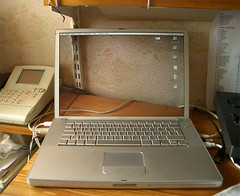For as long as I can remember, one of my “life’s goals” has been to write, direct and produce my own animated short. No doubt countless hours plopped in front of the television every Saturday morning as a young boy watching cartoons directed by the all time greats in animation such as Ollie Johnston, Chuck Jones, Friz Freleng, Walter Lantz, William Hanna and Joseph Barbara, and Tex Avery contributed in no small way to my dreams. These men could take an ordinary pencil sketch and make you believe it’s a living, breathing, creature by painstakingly creating anywhere from 12-24 individual drawings for every second of animation the audience would see on screen. And, at each step along the way, these drawings would be further brought to life by teams of in-betweeners, inkers, painters, background artists, editors . . . to say it was painstaking work would be an understatement.
But there’s a lot more to producing an animated short than simply understanding the physical challenges in doing so. There’s also this little thing called “talent” that comes into play, and I’m afraid without it, the best most of us can do is a stick-figure flip book. Now “Talent” is one of those umbrella words that encompasses a wide range of aptitudes such as an innate sense of comic timing, a natural artistic bent, an eye for staging and choreography and, of course, years of schooling. And while a package such as Toon Boom Studio can’t help foster the Super Genius within you, it can take away the need to worry about the technical side of things as you work to hone your other skills. [Read more…]


Recent Comments